
Australia So Much to See

A. While the best way to ensure water purity is to leave water tanks full, this is not always possible. We leave what water they have in the tanks and tops up ready to go – even if some years between trips and have never had any problems. However should your tanks need a freshening up, a solution of household bleach or pool chlorine will do it. Those who do home brewing can use the bottle wash solution. If using household bleach such as White King, a dilution of 320 mls Bleach per 80 litre tank or 400 mls per 100 litre tank per tank should be strong enough. Fill tanks and soak for around 24 hours then pump out again, pumping through a further amount of water to flush. The best way to slosh it around the tanks is to go for a drive.
If we have taken on bad tasting water without realising that the town’s water is not the nicest, next opportunity I have pumped out all the water an run a couple of rinses through pumping out each time before refilling with the better water supply. Run the pumps for a little while then let the solution rest in the pipes for a while. If you have clear or translucent pipes these will be the ones most likely to need cleaning and should they be subject to algal growth they are easy to replace with new ones.
Always use a food grade hose for filling, as garden hoses that have been lying out in the sun can sometimes transmit a taint. There are two types of food grade hoses; the normal ones from Bunnings and the like which are suitable for water to run through, and the more expensive lined ones, usually blue and white, which are recommended where water may sit in the pipes for some time such as caravan water delivery pipes.
Ideally water will remain in better condition if the tanks are left full for storage, however we just leave them as they are and top them up as needed. Sometimes it is years between trip and the water is perfect; after all the scheme water most people drink is supplemented with underground water that is tens of thousands of years old. Pure water does not go off, and stored in the dark of the tank, it is a better environment than our household water tank. As we don't use filters, we do not fill the caravan tanks with water drawn from bores, rivers and lakes unless we are sure it is of good quality and has no sediment. In these cases we use direct from the bucket and save the good water in the tanks for drinking.
If we have unknowingly picked up scheme water that does not taste nice, emptying the tanks with the pump, adding a little good water, pumping out again then filling solves the taste issue. Where possible, eg if in a caravan park, I make a cup of tea first. If the water doesn't pass the cup-of-tea taste test, it does not go into our tanks.
2014
A. No, ours stays strapped to the wall with Velcro and has stayed unharmed over many thousands of kilometres including some of the roughest roads such as the Tanami, Gibb River and Great Central Roads.
Our television is a cheap LCD one which had poor sound quality speakers attached. We purchased a pair of speakers from DSE and one is mounted in the bed room section and the other in the living room section of our small caravan. It runs direct from the 12 volt batteries, and has a set top box as it is a pre digital set, as well as a connected 12 volt DVD inside the cupboard.
2014
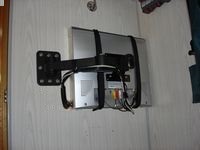
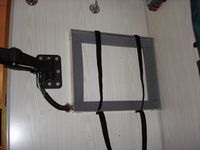
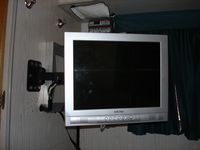
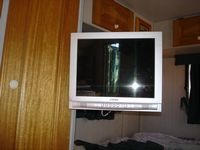
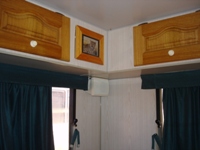
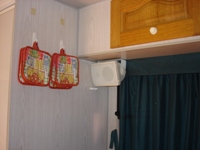
A. From the northern end of the Tanami Road sixteen kilometres south west of Halls Creek to Tilmouth Well Roadhouse is a mainly unsealed and often poorly maintained road. Extra caution is needed as ruts hidden by bulldust have caused rollovers or breakages. The corrugations over such a length of road will do damage to any caravan, even if not enough to be evident at the time. Broken springs or other suspension components, detached water tanks, internal fitting damage and other breakages are not uncommon. Reducing tyre pressures will give a smoother ride and travelling slowly will make the journey easier and less damaging. At each stop check your vehicle and trailer thoroughly.
From Tilmouth Well to Alice Springs, there is a single lane width of seal on the road for most of the 167 kilometres until it meets the Stuart Highway twenty kilometres north of Alice Springs.
Tilmouth Well Roadhouse provides fuel, takeaway food, a restaurant and bar, and the Wirmbrandt Gallery with a shop where Aboriginal dot art paintings can be purchased at very reasonable prices. For accommodation there are cabins and unpowered campsites, plus two powered sites. There is a swimming pool for guests. Ask about using the showers for a fee if not staying overnight.
While fuel can be obtained at the Aboriginal communities along the road, with the closure of the Rabbit Flats Roadhouse in December 2010, there is still at minimum 561 kilometres without any fuel outlets. If you plan to purchase fuel at the Balgo community, you will need a permit, and this application needs time to be assessed. Due to using lower gears and variable speeds, expect to use more fuel than on normal highway travelling.
Times of opening vary in each community, and opening times and supplies cannot be guaranteed so it pays to phone first. Unleaded fuel provided is “Opal”.
Permits
No permits are required to transit the Tanami Road.
Wolfe Creek Crater
Wolfe Creek Meteorite Crater. Wolfe Creek Crater is approximately twenty three kilometres off the Tanami Road, turning aproximately 105 kilometres south of Halls Creek. The road in can be very corrugated.
Although it has long been known to Aboriginal people, who called it Gandimalal, the Wolfe Creek meteorite crater was only discovered by Europeans in 1947 during an aerial survey.
Wolfe Creek Crater is the second largest crater in the world where meteorite fragments have been found. It lies on the edge of the Great Sandy Desert amidst extensive spinifex plains. The average rainfall of the area is 400 mm per annum, but with an evaporation rate of 3,000 mm per annum, it really is desert country.
The crater is 875 metres across and almost circular. The crater was probably around 120 metres below the surrounding plains, but due to erosion is now around twenty metres below the plains. The floor is about sixty metres below the rim, and is fairly flat.
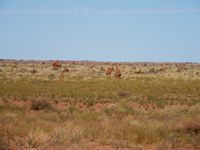
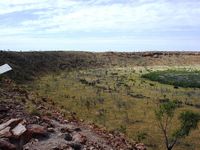
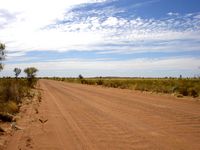
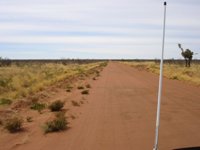
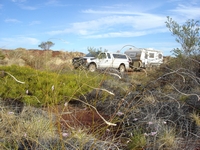
Distances between fuel outlets Kilometres
Halls Creek to Tilmouth Well Roadhouse 869
Halls Creek to Timouth Well if also visiting Wolfe Creek Crater 915
Halls Creek to Billiluna (Mindibungu) 167 Currently closed to visitors
(Billiluna is two kilometres from the Tanami Road) due to Covid restrictions
Billiluna to Balgo (Wirrimanu) 112 Currently closed
(Balgo is 40 kilometres from the Tanami Road and at times the road may be very corrugated)
Billiluna to Yuendumu 595
Balgo to Yuendumu 561 May be closed due to Covid restrictions
(Yuendumu is one kilometre from the Tanami Road)
Yuendumu to Tilmouth Well Roadhouse 107
Tilmouth Well to Alice Springs 187
Distances are approximate and calculated from Google mapping and QPA map books. See the route here.
Contacts and opening times to be confirmed
Billiluna (Kururrungku): (08) 9168 8076
Open Monday to Friday from 7am to 12 noon and 2 pm to 4 pm plus Saturday 9 am to 11 am
Balgo phone (08) 9168 8894
Open Monday to Friday from 9 am to 12 noon and 2 pm to 4 pm plus Saturday 9 am to 12 noon
Yuendumu Mining Co Store (08) 8956 4040
Email: yuendumuminingco@bigpond.com
Camping
There is a DPaW campground at Wolfe Creek Crater with pit toilet and a water tank (water availability not guaranteed).
An unserviced area is suitable for camping at Sturt Creek near the Billiluna turnoff.
There are various gravel scrapes and other tracks to clearings away from the road along the Western Australian section. There are several large rest areas on the Northern Territory section, plus other places to pull off the road for the night.
Plan to have three or four nights on the journey.